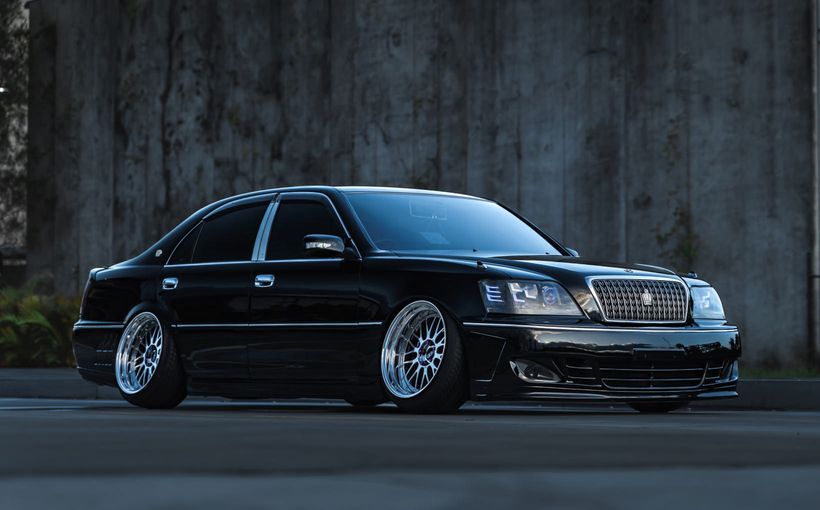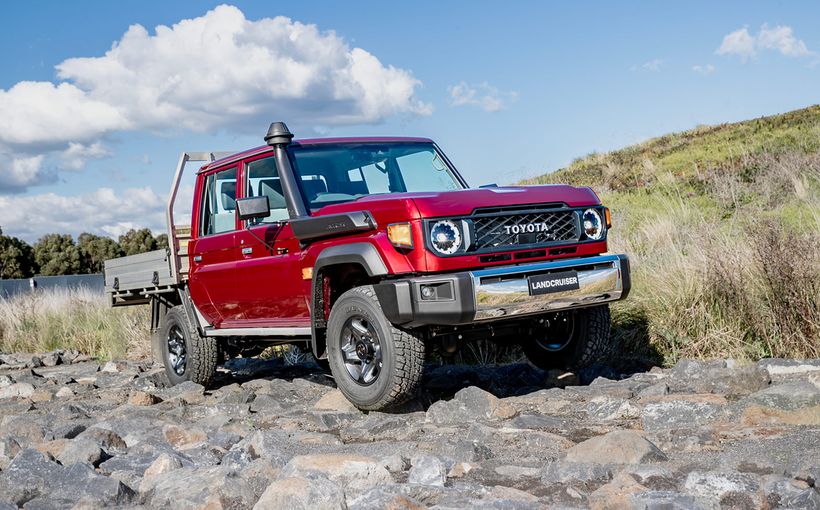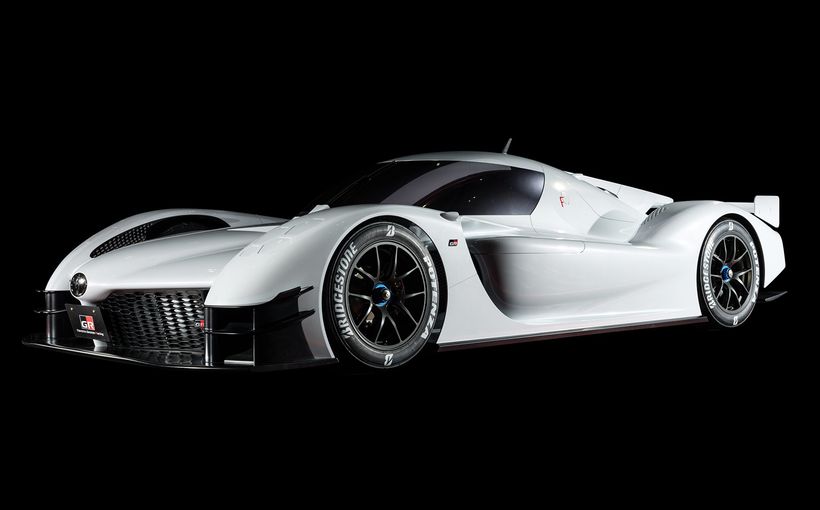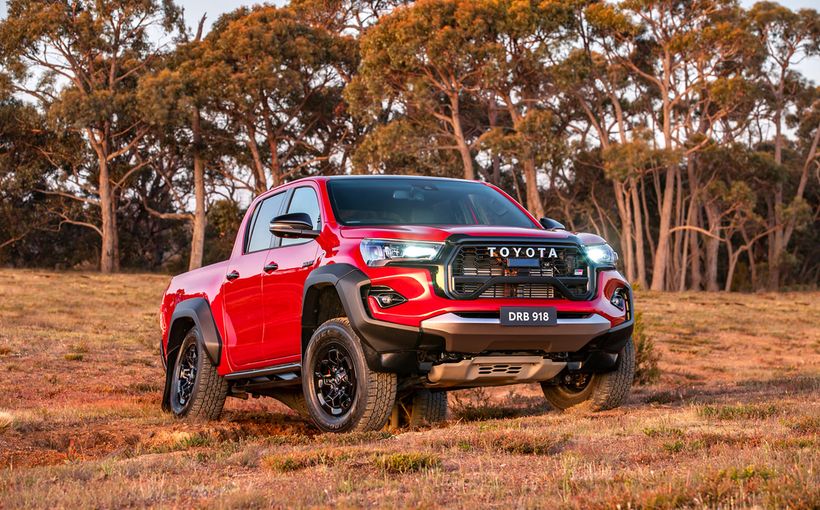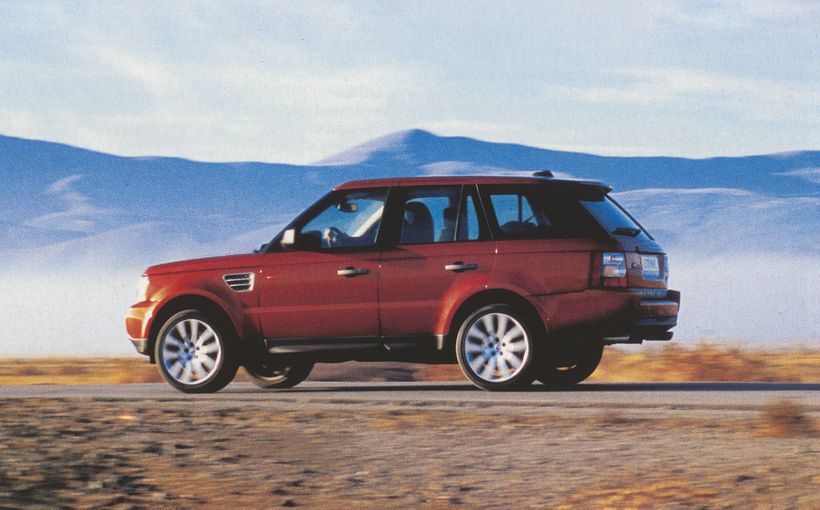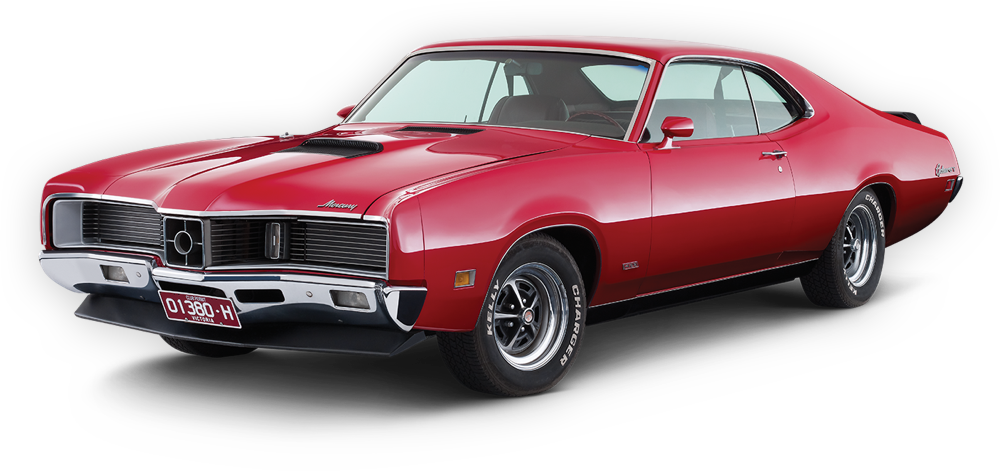
It's the first Japanese mid-engine coupe. The MR2, Toyota's first foray into the real sports car market, isn't quite the SV-3 prototype shown at last year's Toyota Motor Show. The difference is mainly in the nose, which is sleeker and more rounded than on the prototype.
However, Toyota's marketing men jibed at the prospect of going all-out for the sports car sector of the market and have come up with some less potent versions aimed at people who want a city runabout. One of the advantages of the mid-engine concept is that the steering is light, so the car will be easy to drive in town. To make it even easier, Toyota is offering the fourspeed automatic transaxle as an option.
The MR2 looks like a sports car though, with its concealed headlights and sloping nose with integrated bumper. The car has a slight wedge line accentuated by a crease running along the waistline from headlight cover to tail. As on the SV-3, the rear pillars are fairly wide, and slope rearwards while the rear window is almost vertical, to allow access to the transverse, mid-mounted engine.

There is an intake for the front-mounted radiator below the bumper and an air intake for the engine compartment on the righthand rear flank. The body tucks in to narrow sills on all but the top model, which has plastic add-on flared sills, which seems a rather pointless exercise. Also on the top model is a rear spoiler, which is needed to reduce rear lift to the same value as at the front - said to be very low by the Toyota engineers. The spoiler, together with a small one on the rear of the roof, also helps bring the drag coefficient down from the claimed 0.35 to 0.34.
One of the advantages of the mid-engine layout is that the driver and passenger can sit very low, because there is no engine to obscure forward vision. By Japanese standards, the MR2 is very low at 1250mm, so the car has a small frontal area which is conducive to high speed and good fuel consumption on motorways. However, in absolute terms, the MR2 is not that low; it is 70mm taller than the Fiat X1-9.
Toyota's engineers clearly spent some time picking the X1-9 to pieces before they came up with their design, which has an almost identical layout. Overall length is 3925 mm, virtually the same as the Fiat, although the 2320 mm wheelbase is some 100 mm longer. The width is typical at 1665 mm, but the tracks are wider than on its competitors - 1440 mm front and 1445 mm rear. The car is 225 mm shorter than the Corolla Levin, which to some extent is a competitor.

The MR2 is a two-seater pure and simple, but Toyota has aped the X1-9 in giving a luggage locker of reasonable size behind the engine - you could just about get a set of golf clubs in. There is also a tiny boot for soft packages in the nose, sandwiched between the skinny get-you-home spare and the radiator bulkhead.
One unusual feature of the MR2's layout is that the fuel tank is inserted longitudinally into the massive tunnel between the driver and passenger rather like the Pontiac Fiero.
Although this tucks it out of the way, where the amount of fuel in the tank will not affect weight distribution, it limits capacity to 41 litres, the same as the Honda CRX, but nine litres less than the Corolla. That should still be enough for more than 400 km though.
Weight distribution is quoted as 45 percent front, 55 percent rear, so the car layout should have excellent traction. The mid-engine layout should also result in high cornering power and good braking, because as the brakes are applied so more weight l.s transferred to the front, so in most braking situations, the front and rear brakes share the work much more evenly than in front engine/ rear drive or front drive cars.

To reduce noise levels and vibrations, the engineers have built the MR2 around a pair of longitudinal members, stretching from the nose, out around the passenger · compartment and then back in between the wheels, and rtumerous bulkheads: there is one solid steel bulkhead behind the radiator, one formed by the dash panel, another behind the seats, one behind the engine and one built into the rear panel.
All this means the MR2 is a failure when it comes to weight reduction. It weighs the same amount as the longer Corolla (which boasts two seats in the rear) and weighs 40 kg more than the X1-9, which was designed ages ago. It also weighs 140 kg more than the Honda CRX coupe, which of course is shorter. So much for Toyota's much publicised weight reduction program.
As is common in mid-engine cars, there is little space for oddments inside the cockpit, although there is some rather inaccessible space behind the seats. The interior is neat enough in a plastic manner, with a small instrument nacelle and seats offering reasonable support. Unlike the X1-9, the MR2 is a fixed head coupe, but Toyota offers a detachable sunshine roof which can be stowed under the bonnet.

The engine is tucked in transversely behind the driver and suspension is by struts front and rear, the rear suspension incorporating additional transverse links that would be the steering tie-rods on a front-engine layout. These extra links not only provide adjustment, they also prevent the wheels toeing-in or out on bumps.
To counteract the inherent high-speed instability of a mid-engine car, Toyota's engineers have gone for a lot of castor - five degrees 20 minutes - with only 18 mm trail, owing to the use of offset struts. At the rear, there is some toe-in and negative camber for the same reason. Then, at the straight ahead position, there is a little flexibility built into the steering.
Almost all the mechanicals for the MR2 come from the Corolla or Camry range. Top models have the 1.6 litre twin cam 16 valve engine, which develops 96 kW at 6600 rpm, with 149 Nm of torque at 5200 rpm. There is the option, though, of the 1.5 litre 62 kW engine. The twin cam models have ventilated front disc brakes.
The Driver Turns Off
AS LUCK would have it, I drew the basic 1.5 litre model out of the hat for the drive from Tokyo to Hakone. It's still the same basic car, if not as quick as the twin cammer.
Although the MR2 is low, you don't have to do any contortions to get in, while the driving position is not unlike that in the Corolla Sprinter - not a real traditional sports car position in which you sit with the legs almost horizontal.
After a while I decided that this was a practical solution, since forward visibility is excellent, as you can just see the bonnet which slopes away sharply. The rear pillars look slimmer from the inside than from the outside, so even in heavy traffic you can see behind fairly well. In fact, the mirror is a little smaller than is desirable, and as I found later, the spoiler on the top models limits rear vision somewhat.
No power steering is offered, I'm glad to report, and I found that the steering effort is reasonable in town, although some women might complain a little when parking. Overall, though the steering is well weighted, either in the city or on the open road, and since there is less understeer than on conventional cars these days, you actually turn the wheelless than normal. There are 3.1 turns lock-to lock, so the steering is quite highly geared.
The driving position and instruments too, are functional: recognising that this is an enthusiast's car, Toyota has avoided using its awful digital instruments, and has restricted the tacho to an offset 180 degrees segment, which overlaps the speedo to save space.
I was not so impressed with the luggage space, though. The glove locker is small, and the door pockets are a bit cramped. There, is an optional console between the seats, which will just about hold a pocket handkerchief. Although the rear boot can hold some small suitcases, its use is limited because it gets fiendishly hot.
How does the MR2 drive? Initial impressions were very good. I enjoyed threading it through the traffic, finding some slots on the motorway and slicing through with the sort of lane changing manoeuvres that are legal only in Japan. Once the traffic thinned a little, the MR2 responded with rather ponderous acceleration - just like a Corolla - but was eventually running along at about 140 km/h quietly, and following the line well. It was a windless day, but the car didn't want to wander at all: it gave a very good account of itself indeed as a cruiser.
Later, on some curving uphill roads over mountains, the MR2 just didn't have enough power to make things exciting. It just went around on rails, virtually flat out in second, when it was quite noisy. So the overall impression was that here is a car that handles and steers well, has a reasonable ride and a good driving position ... but with the 1.5 litre engine, you really might as well buy the Sprinter.
With the more sporty versions, the body has a bit more jazz, but the tyres are still185/60R14 Bridgestones. Even so, try as you might, you can't get wheelspin from a standing start. Once away though, the twin cam engine races up to the limiter at 7800 rpm, and the short gear lever, which has a narrow gate, slices through from gear to gear with a speed that a racing driver would relish. Heel-and toeing is easy, so everything is all set.
Come to a corner and the MR2 1.6 rockets around, imparting a delightfully solid feel as it hardly rolls at all. Push harder and there is a trace of understeer, and as you use more throttle the back end starts to unstick a little. In most circumstances the handling feels neutral.
On high-speed bends I suspect that understeer would predominate, while on low-speed corners you will have oversteer - but you will need either a racing track or a winding, wide open road to be certain, and neither exists at Hakone.
The high cornering power is backed up by good brakes. Normally the front wheels lock up first, and downhill on a road scattered with some loose gravel, they locked up early, but the car still slowed down predictably. Push the brake pedal going into a corner and the MR2 will still pull up straight, the front tyres just locking up.
Without doubt, the MR2 is a welcome addition to Toyota's range. It is not a fully-fledged sports car though, since it doesn't dart into corners quite as quickly as it might, while the ride and damping are not out of the ordinary. Sadly, in Japanese trim, the twin cam 16-valve engine lacks response and could do with some more mid-range torque to help get the car out of corners more quickly.
Although this is a car that on a brief acquaintance seems fun to drive, you do not feel you are driving something really different. It resembles a good coupe, but with its limited luggage space and not even enough room behind the seats for a briefcase or a jacket, it's not as practical as a good conventional coupe. And because it is rather heavy the performance is brisk rather than exceptional; it might even have a job keeping up with some hot European hatchbacks.
As it stands, the MR2 will be enjoyable, but to turn it into a fiery coupe, Toyota needs to take courage and slot in the new two-litre four-cylinder twin cam engine and take away the rubber mountings for the steering, stiffen up the suspension bushes and fit some decent dampers. Then the MR2 would be a real flyer. For now, though it's a little short of that: the classic case of aiming for two targets and falling between them.

Go Back in time with the Wheel Archive. Get FREE access to 5 years of Wheels archive content now!
Protect your Toyota. Call Shannons Insurance on 13 46 46 to get a quote today.




